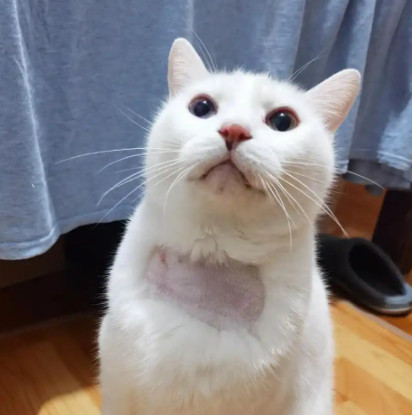92
views
views
Discover the common causes of bald spots in cats, including stress, allergies, parasites, and infections. Learn how to identify symptoms, manage the condition, and prevent future hair loss with expert advice and recommended treatments.
Bald spots, or alopecia, in cats can be concerning for pet owners. These areas of hair loss can be caused by a variety of factors, ranging from environmental conditions to underlying health issues. Understanding the causes and symptoms of bald spots can help you take proactive steps to address and manage this condition effectively.

Common Causes of Bald Spots in Cats
1. Stress and Overgrooming
Cats are meticulous groomers, but excessive grooming can lead to hair loss. Stress, anxiety, or changes in the environment can cause cats to groom themselves excessively, leading to bald patches.
2. Allergies
Allergies to food, pollen, dust, or other environmental factors can cause skin irritation, leading to excessive scratching and hair loss. Identifying and addressing the allergen can help reduce these symptoms.
3. Parasites
Fleas, ticks, and mites can cause significant skin irritation and lead to bald spots. These parasites can trigger allergic reactions and cause the skin to become inflamed and itchy.
4. Skin Infections
Bacterial or fungal infections can cause skin inflammation and discomfort, leading to hair loss. Ringworm, a common fungal infection, is particularly known for causing circular patches of hair loss.
5. Nutritional Deficiencies
A diet lacking in essential nutrients can contribute to poor coat health and hair loss. Ensure your cat receives a balanced diet rich in vitamins, minerals, and fatty acids.
Signs of Bald Spots in Cats
If your cat has bald spots, you might notice the following symptoms:
-
Bald Patches: Areas of the body where hair is missing.
-
Thinning Fur: General thinning of the coat.
-
Excessive Grooming: Increased licking or scratching.
-
Redness and Inflammation: The skin may appear red and irritated.
Treating Bald Spots in Cats
1. Consult Your Veterinarian
The first step in treating bald spots is to consult your veterinarian. They can diagnose the underlying cause and recommend the appropriate treatment plan. This may include medications, dietary changes, or special shampoos.
2. Use Anti-itch Products
For immediate relief from itching and irritation, consider using Puainta® Natural Hot Spot Spray for Dogs and Cats. This pure natural formula is a gentle anti-itch spray that relieves hot spots, rashes, redness, swelling, and helps reduce excessive shedding and dandruff. Learn more about Puainta® Natural Hot Spot Spray.
Preventing Future Bald Spots
To prevent future bald spots, consider the following tips:
-
Regular Veterinary Check-ups: Schedule regular visits to your veterinarian to monitor your cat's health and detect any potential issues early.
-
Nutritional Support: Ensure your cat receives a balanced diet rich in essential nutrients.
-
Parasite Control: Use regular flea and tick treatments to prevent infestations.
-
Stress Management: Provide a calm and stress-free environment for your cat.
Conclusion
Bald spots in cats can be caused by various factors, including stress, allergies, parasites, and skin infections. By understanding the causes and symptoms of bald spots and using effective products like Puainta® Natural Hot Spot Spray, you can provide relief and promote healthy skin for your feline friend. Always consult your veterinarian for personalized advice and recommendations.










